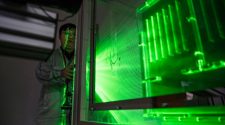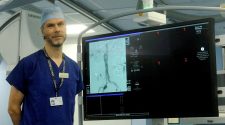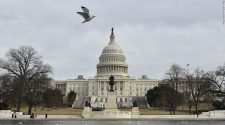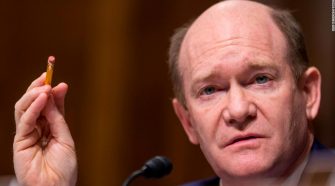Thomas W. Greeson.
During the COVID-19 public health emergency (PHE), the U.S. Centers for Medicare and Medicaid Services (CMS) amended or waived a wide array of rules, allowing for considerably more flexibility.
The PHE determination has been renewed every 90 days on an ongoing basis (federal law provides that PHEs be declared in 90-day increments). The latest 90-day renewal declaration from the U.S. Department of Health and Human Services lapses on April 16, 2022.
If the PHE is not renewed, there may be changes to a variety of rules that affect radiologists. A broad set of enforcement waivers — from telemedicine licensure to physician self-referral and Health Insurance Portability and Accountability Act (HIPAA) privacy — will come to an end. In this article, I’ll focus on how this would affect supervision requirements and teleradiology.
Expanded direct supervision
During the emergency, the CMS in a 2020 interim final rule authorized nonphysician practitioners (NPPs) such as nurse practitioners and physician assistants to directly supervise level 2 diagnostic tests performed with contrast. In doing so, the CMS cast aside a longstanding requirement that only physicians may supervise those tests.
Under the rule — made permanent in 2021 — NPPs may supervise such tests if they are authorized to do so under their state’s law and scope of practice. Note: Not all state laws allow NPPs to perform such services.
The CMS also modified its supervision rules to allow the supervising physician or NPP — when the latter is acting in accordance with state law and state scope of practice — to be immediately available when supervising level 2 diagnostic tests through virtual presence using real-time audio/video communications technology, instead of requiring the supervising practitioner’s physical presence.
Ordinarily, the Medicare rule requires the supervision to be performed on site. This change was tailored to allow virtual direct supervision of contrast studies, but it is slated to end on the last calendar day of the year in which the PHE ends. Assuming the PHE ends sometime this year, the presence of the supervising physician/practitioner can be via virtual presence through audio/video real-time communications technology (excluding audio-only) only until December 31, 2022.
Last summer, when the CMS published its calendar year 2022 Medicare Physician Fee Schedule (MPFS) proposed rule, the agency sought comment on whether the definition of “direct supervision” — including immediate availability through virtual presence, which is still in effect now — should remain permanent.
The CMS did not comment on this matter, much less make any changes, when it published the calendar year 2022 final MPFS rule, so virtual presence is satisfactory through 2022. In its upcoming calendar year 2023 proposed MPFS rule, the CMS might act to continue allowing the use of “virtual presence” when performing direct supervision. Stay tuned for answers when that proposal comes out this summer.
Telehealth licensure
The CMS has also raised the question of whether it should maintain certain telehealth policies adopted during the PHE. It should be noted that teleradiology services are technically not classified as “telehealth” services under Medicare rules. The professional component of a radiology service has long been considered to be a physician service, and it has been regulated as such rather than under the telehealth rules.
But when the CMS relaxed some rules related to cross-state services, that relaxation also impacted radiologists in their delivery of services. Most profoundly, the CMS temporarily relaxed some stringent Medicare enrollment rules and have allowed licensed physicians to render services outside of their state of enrollment and given brief latitude to groups taking reassignment from those physicians to bill for these services to their local Medicare administrative contractor (MAC).
Postpandemic, radiology groups will be expected to denote the name and zip code for where the interpreting physician provided services on the CMS 1500 claim form, and the CMS will expect that claim to be adjudicated by the MAC where the service was provided.
Going forward, radiology groups that employ or contract with radiologists who perform final reads from states outside the group’s practice location and who reassign Medicare billing rights to the group should take steps to ensure compliance. These groups should make sure they are enrolled not only with the MAC for the jurisdiction where the group has its own principal practice location but also with the MAC for the state where the interpreting provider is working regularly (i.e., the interpreting radiologist’s location is not an infrequent and unusual one).
When they enroll with MACs in other states, the radiology group’s sole presence in that state may be the practice location of the out-of-state radiologist, so that address can be the practice location listed on its Form CMS-855B submitted to the other state’s MAC.
Additionally, radiology groups should understand that physician state licensure requirements will not be forever waived. Although some states do not require licensure of a radiologist who performs services for patients only from outside the state where they are working, that is not universal. Care should be taken to determine whether licensure will be required in the transmitting state (where the patient resides) and/or in the state where the images are read.
Tom Greeson is a partner in the Reed Smith Life Sciences Health Industry Group. He focuses his practice on health care regulatory law, representing radiology groups and diagnostic imaging suppliers. He is a Fellow and a member of the board of directors of the Radiology Business Management Association. He may be contacted at [email protected].
The comments and observations expressed are those of the author and do not necessarily reflect the opinions of AuntMinnie.com.
Copyright © 2022 AuntMinnie.com














Breaking up big tech would be a big mistake